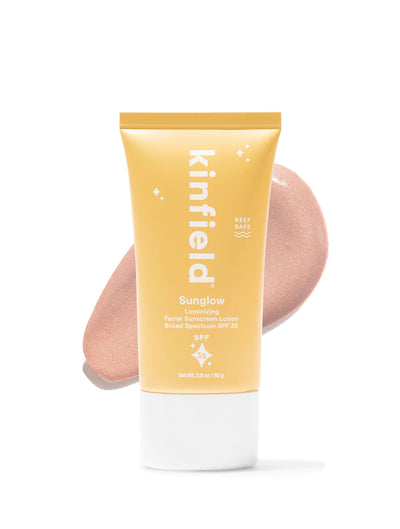Expert Advice on Slugging Your Skin
A simple search of the word “slugging” will undoubtedly yield some interesting and even contradictory results. Influencers swear by it. People regularly rave that their grandma, who doesn’t look a day over 20, has been doing it for years. It is a trend promoted widely on social media.
Slugging is basically slathering an occlusive agent, like Vaseline, all over your face as the last step of your beauty regimen. I can get the allure behind this: if your barrier sucks then, yeah, you’d benefit from a new one. So, this trend has credibility!
But there is a right way and a wrong way to do it. Let’s take a look at all of the factors to make sure you don’t wind up causing more harm than good in your attempt to resemble a glazed donut, shall we?
What does occluding the skin mean?
Occlusion is when we cover the skin directly with impermeable films and substances. This could be anything from a bandage to a substance such as petrolatum (Vaseline) or paraffin. Occlusion aids in the penetration of certain molecules into your skin which is what makes sheet masks more than just a fun gimmick. Those popular rubber and alginate masks used in the treatment room also function this way.
The viscosity or thickness of a skincare product doesn't necessarily correlate to its function in this case. Just because a product is thick, doesn't mean it is occlusive.
An example of this is silicones in cosmetics. While a true occlusive will create an impermeable barrier, silicones actually create a water-resistant, yet permeable film. Occlusives will obstruct the normal ventilation of the skin surface, which is why many reference suffocating the skin when talking about occlusives. Silicones create a barrier that is vapor permeable and breathable.
In a 2014 comparison of silicone and petrolatum, the levels of water lost through the skin, known as transepidermal water loss, was measured in 26 healthy individuals. Both petrolatum and silicones significantly decreased this water loss 15 minutes after application, but the tested silicones did not moisturize the skin. Petrolatum formed an occlusive layer, creating an increase in skin hydration that lasted for more than 4 hours.
These results would lead many to hop aboard the slugging train, but let’s take a deeper look.
So what can we do?
When the skin is in a state of crisis it can be beneficial to use something like this. But what qualifies as a state crisis where the skin is concerned?
It’s not always what you would think.
As an esthetician who works with a lot of skin throughout the day, I see a variety of different concerns. Many people think they struggle with one thing when that really isn’t the case.
When the skin barrier is impaired it is often far simpler to repair it using the basic supporting tools of skin barrier repair outlined in our Barrier Repair Blog. However, not everyone responds or repairs in the same way. This is why I work side by side with clients. I request daily correspondence through the first couple of weeks as we repair the skin and, if we begin to see red flags, I am quickly able to redirect treatment.
One such red flag would be the continued feeling of discomfort. Michele Corley's Pore Clearing Cleansing Oil and AnteAGE's Moisturizer are the first products I always recommend leaning on. They are specifically designed to calm the skin and repair the skin barrier by using skin identical lipids and not by occluding the skin.
In certain cases however, particularly in cases where aggressive acne treatments have been used in the past, the skin simply won’t tolerate much. In rare but extremely severe cases, even water can be painful to apply. It is in those situations only that you will want to lean on an occlusive for support. The trick is to not allow it to become a long term treatment. 2-3 nights of occlusion is the most you want to allow.
Substances which occlude can help with the health of the skin barrier, especially when the skin is in a state of crisis. But ultimately there is only a partial restoration of barrier function. These non physiological substances do not support natural actions within the skin. They do not encourage the production of crucial components within the skin barrier. In fact, they do the opposite.
These solid substances melt at body temperature and fuse into the spaces where our natural lipids are meant to reside and function. It is this action which impedes barrier health. This means that, yes; the immediate use of your Vaseline can help to reduce water lost through the skin. It can even partially help with skin barrier recovery... However, continued use of the substance as part of your nightly regimen can do the exact opposite of what you are hoping to achieve.
The Process
In healthy individuals with adequate sleep schedules, the skin barrier is at its cyclical healthiest point in the mornings. This means that introduction of any new products should be done then and not at night.
Starting off slow with your Cleansing Oil and eventually adding in your moisturizer to your regimen, only as the skin shows it can tolerate it, is crucial to success in these “crisis” situations. Furthermore, using something like Vaseline can help prevent that excessive moisture loss, but past a few days, it provides zero value to the skin.
It is for this reason that my occlusive of choice is AnteAGE’s Biogel. This innovative occlusive does not contain a base of petrolatum but rather a base made up of lipids which actually support barrier repair within the skin. While it still functions as an occlusive, bio identical lipids allow it to have more beneficial functionality with properly functioning skin being an end result of use. Even with this support, occlusion is not something the skin wants or needs long term so using this on a very temporary basis is still recommended.
After the Crisis
Once the skin barrier has been repaired, you may still be looking for something extra. A botanical alternative to petroleum based products is going to be pomegranate sterols. Unlike petroleum jelly, pomegranate sterols can actually closely mimic cholesterol, a crucial part of our skin barrier that supports overall skin health. It is the reason the Biogel works so well. A hydrating spray which can also support the skin's microbiome and subsequently the skin barrier is Anna Lotan's Moisture Splash or for more intensive hydration needs, the Missha Time Revolution.
Ultimately, there are many reasons why our barrier can suffer. As mentioned, our barrier is naturally weaker at the end of the day vs the beginning of the day. It is weaker during menstruation. External and internal elements can cause it to falter. Exposure to sun or wind, even stress and diet can have an effect. Aging and everything that comes with it naturally causes our barrier to weaken so using barrier protective products containing the lipids found in our barrier: ceramides, cholesterol and free fatty acids becomes necessary to maintaining basic skin health. Most of the products I recommend as an esthetician work on specific issues but are also formulated to specifically support, repair and/or protect the skin barrier. It is something necessary in all skincare, not just during that time of crisis, but to prevent a crisis from occuring in the first place
About the Author:

Dru Pattan is a Licensed Esthetician with a background in cosmetic chemistry, specializing in acne and compromised skin through a barrier first approach. Her philosophy centers on supporting the skin’s natural function rather than forcing it into submission, focusing on long term health over quick fixes.
Her own journey with severe cystic acne sparked her career and remains her most challenging case to date. This personal experience, combined with over a decade in practice, drives her commitment to understanding the science of skin on a deeper level. She has pursued advanced education relentlessly, refining her methods through continual study and practical application.
In addition to her clinical work, Dru is a contributing writer for Dermascope magazine and an advocate for elevating education within the esthetics community. Whether working with clients or mentoring professionals, her goal is to bring clarity, science, and compassion to an industry often clouded by misinformation.




Leave a comment